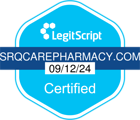Dermatology Compounding
By Brittany A Duke, PharmD
Would you like to learn more about dermatology compounding? Dermatology compounding can include cosmetics, skin care, and even custom prescriptions. Compounding topical medications is a way for dermatologists to prescribe customized topical treatment options based on your personalized needs. If you have skin conditions such as acne, psoriasis, rosacea, or warts, an experienced compounding pharmacist can often treat them successfully. Read on to learn:
- Why you would need dermatology compounding
- What conditions can be treated with dermatology compounding
Why Do You Need Dermatology Compounding?
Custom compounding topical medications has many benefits in comparison to traditional topical formulations, including the following:
- Personalized Medicine: Compounding allows you to personalize your prescriptions to best suit your individual needs as a patient. You may also prefer one type of product over another, such as a gel over a lotion. A tailored approach caters to your personal preference.
- Allergies: If you have allergies or sensitive skin, your pharmacist can make compounded medications without irritating ingredients or unnecessary additives and preservatives.
- Dosing: Your compounding pharmacist can adjust the dose of your medications to deliver the needed benefit and reduce the risk of side effects.
- Specialized Treatments: You might require a unique blend of ingredients to achieve the results you are looking for, and dermatology compounding provides the personalization to achieve these goals. Your pharmacist can combine multiple ingredients with different mechanisms of action in a single medication to simplify your treatment regimen.
- Availability: If you have a rare condition that requires an uncommon treatment, compounding pharmacies can prepare medicines that are not widely available in retail pharmacies. Compounding topical medications can also be an effective way to avoid prior authorizations or the uncertainty of insurance co-pays.

What Conditions Can be Treated With Dermatology Compounding?
Compounded dermatology products are available in a variety of formulations and treat several conditions, including:
- acne
- psoriasis
- rosacea
- warts
Acne
You may be embarrassed by acne on your face, neck, or chest. If over-the-counter (OTC) treatments, such as benzoyl peroxide, do not work for you, topical compounds may be an effective option.
If you have moderate acne, niacinamide gel can offer you some relief. Your pharmacist can prepare 4% niacinamide gel in water and propylene glycol, thickened with Carbopol 940 and trolamine, to be applied twice daily for mild-to-moderate acne.
Some studies have proven that estriol 0.03% solution may be effective for acne scarring.
Psoriasis
Psoriasis is a common dermatologic problem that affects about 2% to 3% of people worldwide. If you are living with psoriasis, some of your symptoms may include:
- dry skin
- itching
- redness
- soreness
- swelling
If you have severe psoriasis, you may require specialized treatment from a compounding pharmacist.
One option that might be effective for you is a prepartion of zinc pyrithione 0.2% in a topical spray or solution. Your pharmacist may also add clobetasol 0.05% to improve effectiveness.
Cyclosporin, a medication typically taken orally, is also effective for psoriasis treatment in compounded topical formulations.
Rosacea
Because there are limited options currently available to treat rosacea, customized compounded medications are a viable alternative. Rosacea is often difficult to treat with topical preparations alone, and oral medicines are typically added.
Many treatments, including thermal waters and various creams, are commercially available, but with dermatology compounding, your pharmacist can combine them with other medications or topical anti-irritants.
Warts
Warts are caused by viruses in the human papillomavirus family. They are common and often treated with OTC products. If OTC treatments do not work for you, your compounding pharmacy offers various additional treatment options.
Summary
Pharmacy compounding has a significant role and usefulness in dermatology. Good communication with your pharmacist is essential for personalizing your treatment by combining individual ingredients to make medications that are tailored to your specific needs. If you have skin conditions that need specialized care, be sure to talk to your compounding pharmacist about dermatology compounding.
About Author:
Dr. Brittany A Duke is a Pharmacist and freelance health writer with over 5 years of experience in medical writing. Prior to her new position as a Global Regulator Manager for Bristol Myers Squibb, she worked at the FDA for 4 years. At the FDA, she was a Medical Writer for the Office of Surveillance and Epidemiology, Division of Medication Error Prevention and Analysis, Rapid Response Team. There, she was responsible for the development of regulatory documents including guidance, regulations, policies, and procedures that affect the drug approval or post market product safety surveillance and evaluation process.
References:
- Fields SW. Compounding Useful in Dermatology. Pharmacy Times. Published online November 1, 2007. https://www.pharmacytimes.com/view/2007-11-8280
- Psoriasis statistics. National Psoriasis Foundation. https://www.psoriasis.org/psoriasis-statistics/#:~:text=Prevalence&text=1%5D-,125%20million%20people%20worldwide%E2%80%942%20to%203%20percent%20of%20the,the%20World%20Psoriasis%20Day%20consortium. Reviewed 10 December 2020. Accessed 14 June 2021.
- Shabeeb N. Compounding topicals in dermatology. Cutis. 2020;105(5): E25-E26. https://www.mdedge.com/dermatology/article/223246/mixed-topics/compounding-topicals-dermatology
- Sánchez-Regaña M, Llambí-Mateos F, Salleras-Redonnet M, Iglesias Sancho M, Collgros Totosaus H, Umbert-Millet P. Compounding as a current therapeutic option in dermatology. Actas Dermosifiliogr. 2013;104(9):738-756. doi:10.1016/j.ad.2012.03.007. https://www.actasdermo.org/en-compounding-as-current-therapeutic-option-articulo-S1578219013002060
